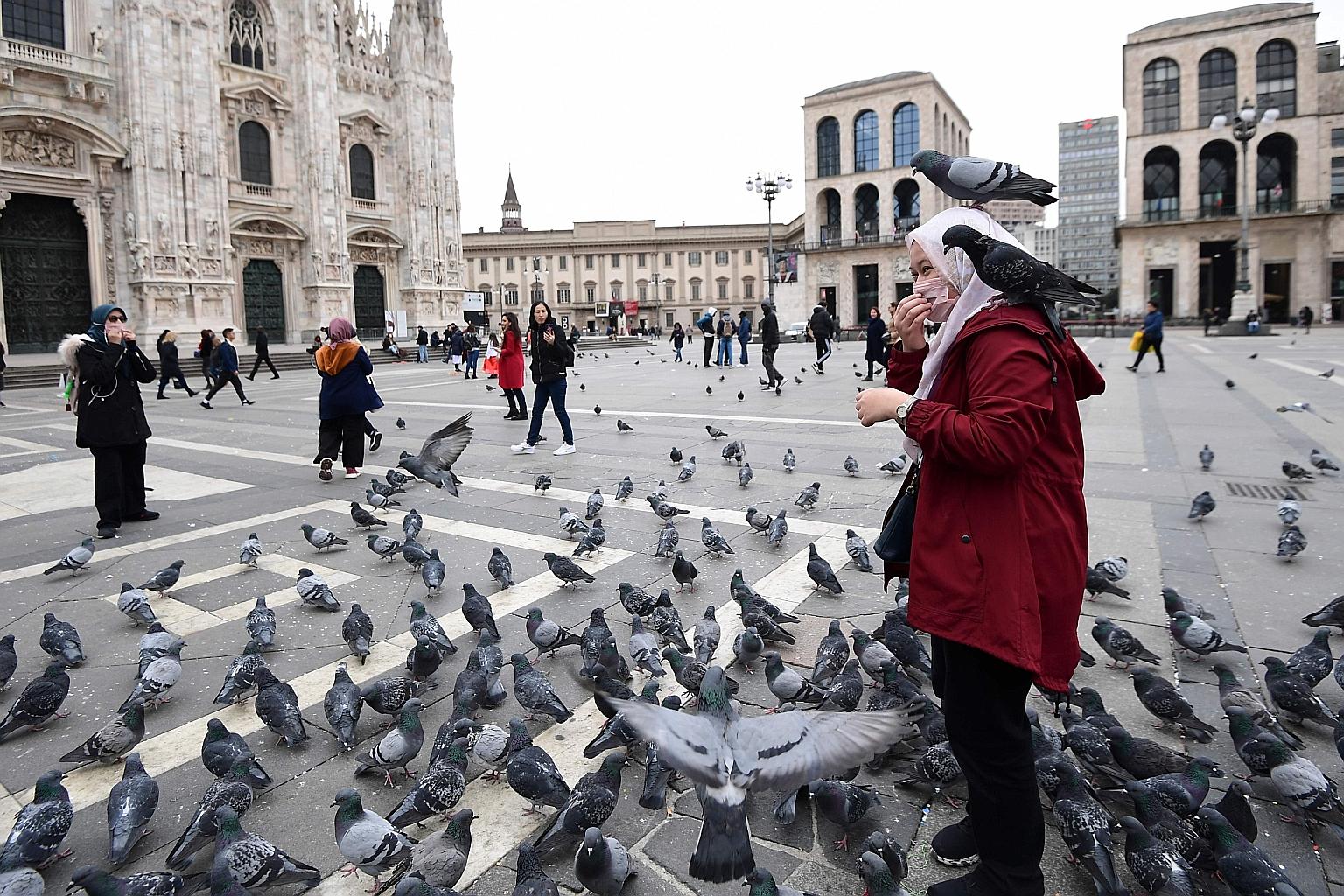Coronavirus outbreak - Italy
Italians seek answers on rapid spread in country
Sign up now: Get ST's newsletters delivered to your inbox

Tourists at the Piazza del Duomo in Milan, in Italy's northern Lombardy region, on Saturday. On Feb 21, Lombardy announced that a 38-year-old Italian man had tested positive for the virus. Within a week, 888 people were confirmed to have caught the disease, of whom 21 died.
PHOTO: AGENCE FRANCE-PRESSE
Follow topic:
MILAN • Italians want to know why their country has become the Wuhan of Europe. It had at least 1,128 confirmed cases by yesterday.
The first two cases came to light at the end of January when two Chinese tourists from the central Chinese city of Wuhan - the epicentre of the Covid-19 outbreak - fell ill during a trip to the country.
The couple were immediately put in isolation, everyone they had come into contact with was tested for the virus, and Italy's government became the first in Europe to ban all direct flights to and from China, in a bid to stop further contagion.
The two Chinese are not believed to have infected anyone else.
"The system of prevention put into place by Italy is the most rigorous in Europe," Prime Minister Giuseppe Conte told reporters on Jan 31.
His confidence was misplaced.
On Feb 21, Italy's northern region of Lombardy announced that a 38-year-old Italian man, named only as Mattia, from the town of Codogno, 60km south-east of Milan, had tested positive for the virus.
Within a week, 888 people were confirmed to have caught the disease, of whom 21 died.
"We were considered to be the country that had adopted the most drastic and fastest preventive measures," said Dr Massimo Galli, head of the infectious diseases department at Milan's Sacco hospital, where some Covid-19 patients are being treated.
But he said the epidemic probably started well before Codogno resident Mattia, dubbed "patient one", fell ill.
When Mattia first showed up at the Codogno hospital on Feb 18, no alarm was raised about his symptoms because he had not been to China, local officials said.
The consequences were dramatic.
After spending time in the emergency room that day, surrounded by other sick patients, he decided to return home, the local health authority said. But his condition worsened and he was back in hospital the next day with no protection in place.
He was not diagnosed until the night of Feb 20 and, by then, he had infected five healthcare workers and at least one fellow patient, besides his pregnant wife and a friend.
They in turn spread the disease before going into quarantine.
A nurse from the hospital told Reuters last Thursday that he suspected the illness had been circulating days before Mattia arrived seeking help.
"For at least a week before the first case was discovered, we had observed an abnormal number of pneumonia cases. All these persons were treated and sent back home," he said, asking not to be named.
No one knows who brought the illness to Italy's wealthy north. Scientists initially believed the unwitting "patient zero" might have been a colleague of the Codogno patient who had recently returned from a business trip in China. But he tested negative, leaving no other obvious candidates.
Dr Marino Faccini leads a team of experts in Milan who are tasked with trying to find the source of viral outbreaks.
However, after days of plotting possible paths for the infection, he has drawn a blank.
"We are (now) working to limit the virus and not so much looking for patient zero, whose (illness) dates back quite some time and is difficult to locate," Dr Faccini said.
REUTERS

